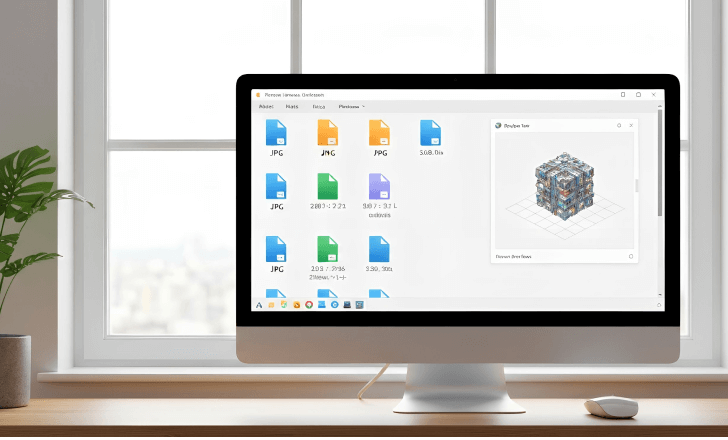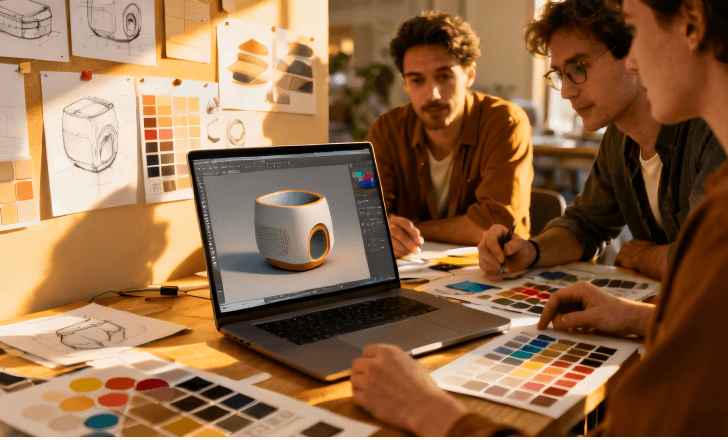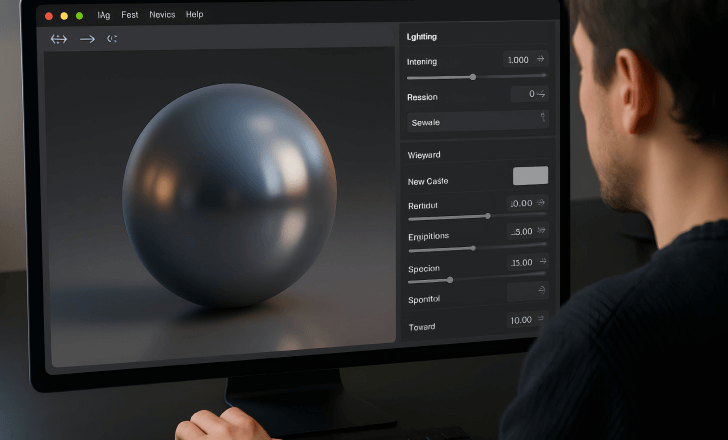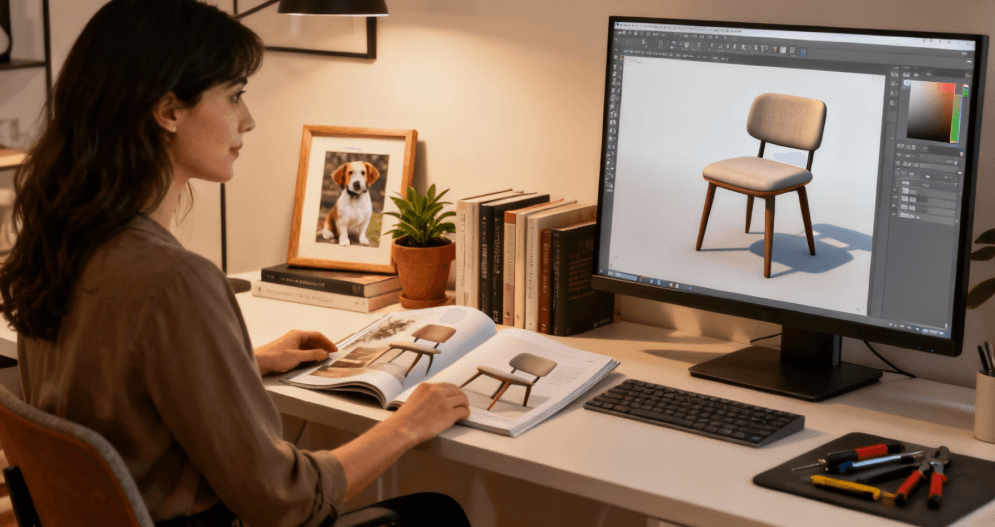When creativity meets technology, new possibilities open up for designers, artists, and developers. A 2D to 3D model converter is one of those breakthroughs that turns imagination into tangible form. With a single image upload, you can create detailed, realistic 3D models ready for prototyping, VR, games, or animations—without any specialized software.
RealityMAX makes this process simple. Its Image to 3D tool allows you to drag and drop a picture and watch it transform into a fully formed 3D model in seconds. Whether you’re a product designer, an artist, or someone just experimenting with ideas, this kind of intuitive conversion opens new creative and commercial doors.
What is a 2D to 3D model converter?
A 2D to 3D model converter is a tool that automatically generates a 3D model from one or more 2D images. It identifies depth, texture, and perspective data to create a volumetric version of your image. Instead of manually modeling polygons in a 3D software, you simply upload an image, and the converter handles the complex geometry and surface generation behind the scenes.
RealityMAX’s platform takes this further by providing browser-based conversion—no installation, no limits on operating systems like Windows or Linux, and no need for technical setup. It supports common formats such as PNG, JPG, and OBJ, and produces accurate, high-resolution 3D outputs that are ready to use or refine.
How does it turn a single image into 3D?
The process starts with a single image—a photograph, drawing, or concept render. Using AI-driven algorithms, the converter identifies shapes, shadows, and perspective clues to calculate depth. From there, it reconstructs a digital model with realistic surfaces and textures, generating a sense of volume and proportion that matches the source image.
You can preview the 3D model instantly on the page, rotate it, zoom in to inspect details, and even fine-tune parameters like scale or lighting. It’s a fast and intuitive process that transforms a static picture into an interactive digital asset.
What file size and format should you use?
While most converters support common formats, file size and resolution play a crucial role in the final result. Higher-resolution images provide more data for the system to interpret textures and edges accurately. RealityMAX supports up to 10 MB per image by default, allowing you to maintain excellent fidelity even for complex designs.
Accepted formats include JPG and PNG, which balance clarity and manageable size. The platform’s cloud system automatically optimizes each file to ensure that your upload, conversion, and preview run smoothly, even on standard devices.

From image to 3D: the workflow explained
RealityMAX’s Image to 3D feature is built to make creation as simple as possible. You don’t need to learn modeling software or export maps manually. The steps are straightforward:
- Upload or drag your image. You can drop a photo, sketch, or digital concept directly into the converter.
- Let the AI analyze and generate. In a few seconds, your flat image is transformed into a 3D model with depth and texture.
- Preview and adjust. Check your model in 360°, modify the scale, tweak surface realism, or update lighting.
- Save and download. Export your OBJ file or embed your scene directly from the RealityMAX platform.
The result is a ready-to-use model that fits perfectly in your creative workflow—whether for animation, prototyping, or showcasing products in VR.
Why designers and artists love this tool
For product designers, speed matters. Prototyping often involves constant iteration, and an AI-powered converter helps you turn ideas into visuals instantly. Artists use it to visualize sculptures, furniture, or even logos in three dimensions. With free credits available to new users, anyone can experiment without cost or commitment.
RealityMAX’s platform supports collaboration, too. You can share your 3D models directly with your team or clients using simple links, eliminating the friction of large file transfers. Everything happens online, so you can preview, edit, and review models together in real time.

How accurate are AI-generated 3D models?
Accuracy depends on the quality of the input image and the complexity of its geometry. Simple shapes with clear edges and lighting are easier to interpret, while intricate textures may require refinement. Still, RealityMAX’s AI consistently produces high-quality depth estimation and texture mapping, giving you an excellent base to work from.
Each generated model is fully editable—you can refine it using tools like Blender or integrate it directly into a rendering pipeline for games or animations. This flexibility makes it ideal for professionals who value both speed and control.
What makes RealityMAX’s converter unique?
Most 2D to 3D tools require local software or coding knowledge. RealityMAX changes the game by offering a web-based system that handles every step—from conversion to visualization—on the cloud. You just need to drag and drop your image, and the AI does the rest.
Other advantages include:
- Real-time previews: See results instantly as your model forms.
- Cross-platform compatibility: Works on any computer or browser.
- Creative control: Adjust settings for scale, surface detail, and lighting.
- Easy download options: Export in standard formats like OBJ.
- AR-ready assets: Integrate directly into RealityMAX scenes for immersive viewing.
It’s not just fast—it’s also accurate, easy, and absolutely creative.
Can it handle complex textures and logos?
Yes. The converter is designed to recognize logos, patterns, and detailed images effectively. If you upload a product photo or logo design, the system interprets contours and gradients to build realistic surfaces. This makes it perfect for marketing teams who want to visualize branded items or 3D packaging concepts quickly.
The converter even supports transparent PNGs, maintaining clean outlines without background noise—ideal for creating product mockups or 3D assets for online stores.
How to enhance realism after conversion
Once your 3D model is generated, you can add finishing touches directly within RealityMAX. Adjust materials, tweak lighting angles, or apply textures from the platform’s asset library. The built-in ReIMAGINE AI feature allows you to generate new materials or backgrounds through prompts, giving your model extra depth and storytelling power.
You can also explore animation or VR viewing options, turning static concepts into interactive experiences. The goal is to bridge the gap between idea and impact—to make every upload come to life with authentic detail.

Why a 2D to 3D model converter matters for creativity
Every creative process starts with a spark—an idea captured in a photo or sketch. The challenge is translating that into something tangible. With a 2D to 3D model converter, that translation happens instantly. You don’t lose time in technical workflows; instead, you focus on refining and experimenting.
For artists, designers, and developers, it’s a new way to express creativity without boundaries. You can create, preview, and share your models with ease, testing ideas faster and communicating your vision more effectively.
Ready to create your first 3D model?
If you’ve ever wanted to turn a flat image into a 3D scene, now’s the time. Upload your photo, drag your logo, or drop a design sketch—RealityMAX’s 2D to 3D model converter does the heavy lifting. You’ll get a realistic 3D output in seconds, complete with textures, depth, and detail.
Sign up today to receive free credits and start creating your own 3D designs instantly. With RealityMAX, your imagination doesn’t stop at 2D—it takes on new dimensions of creativity.
